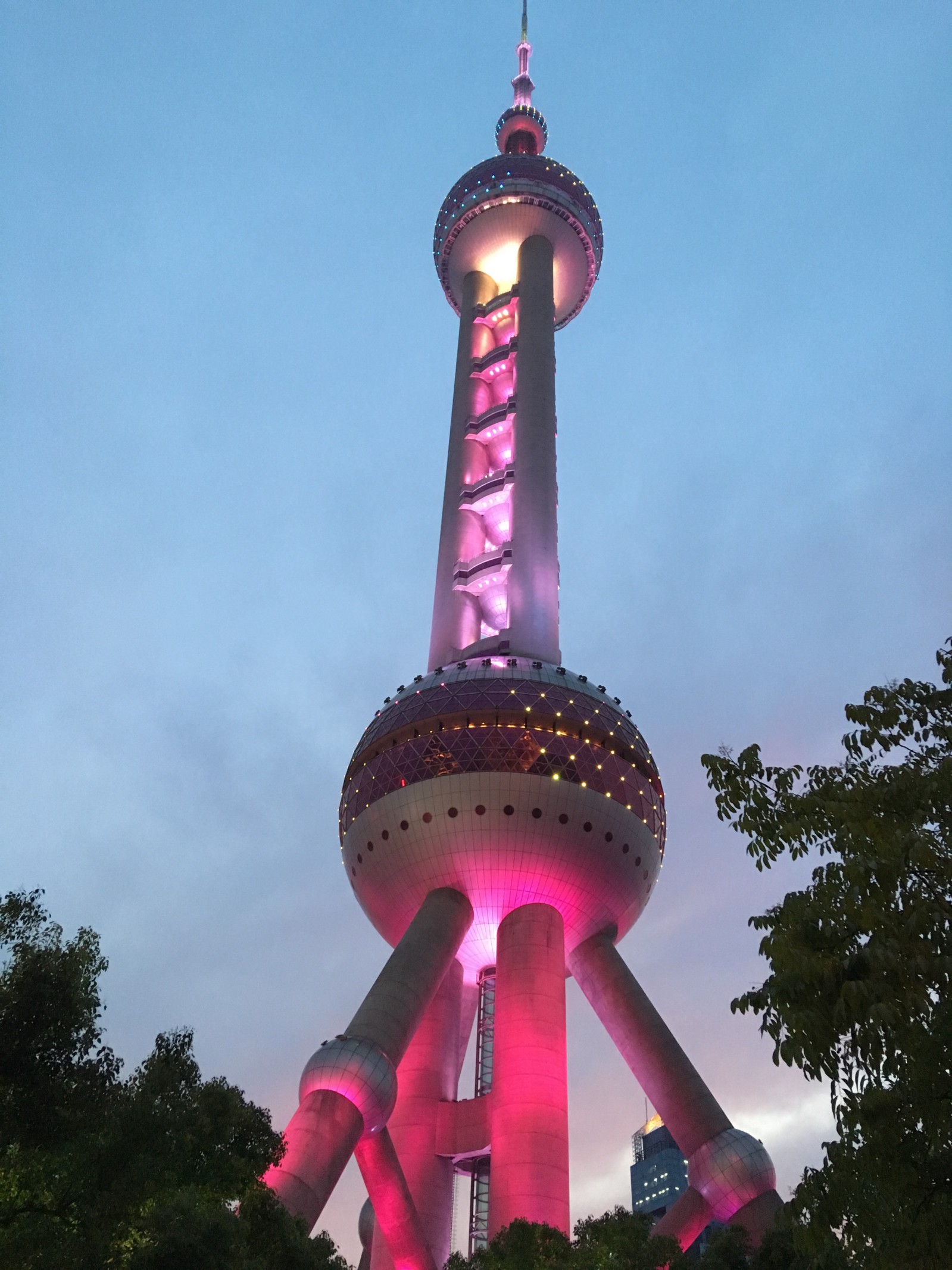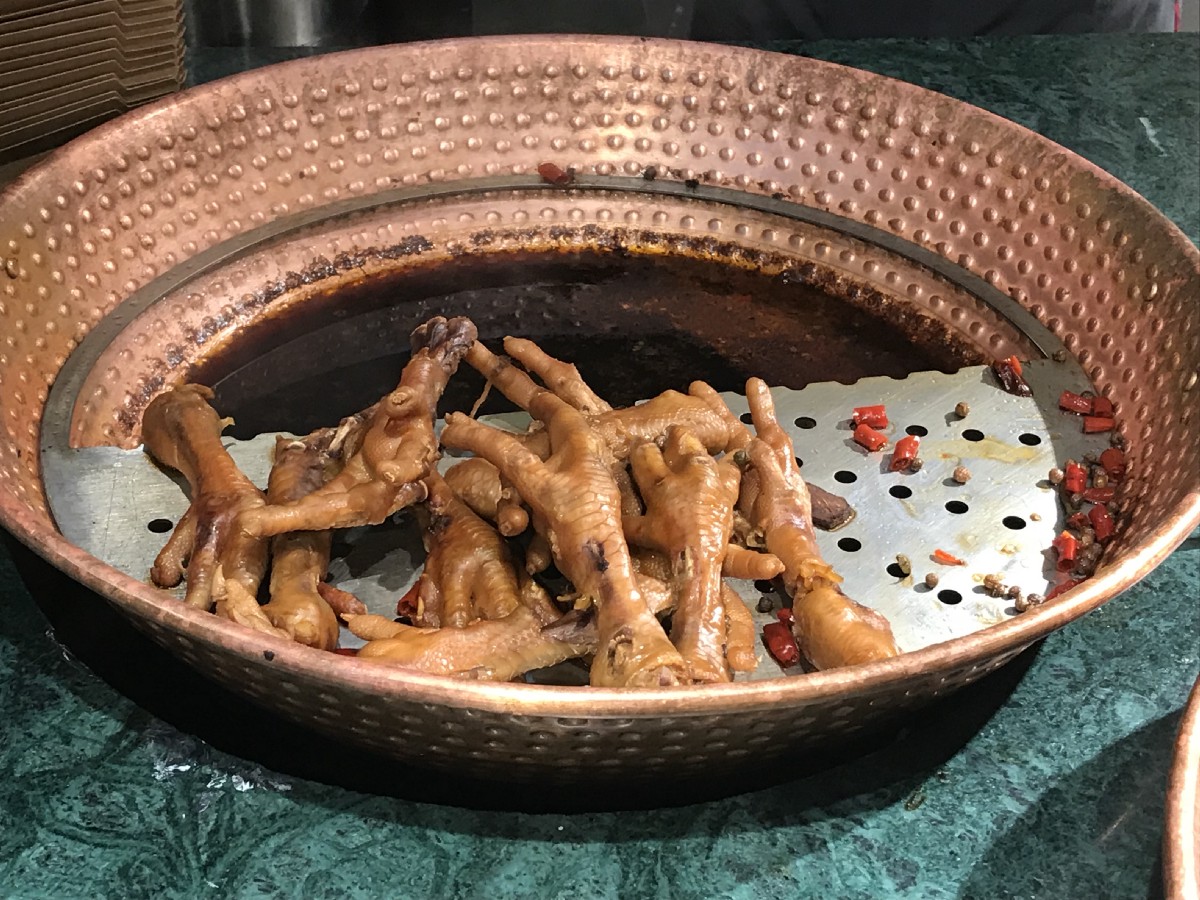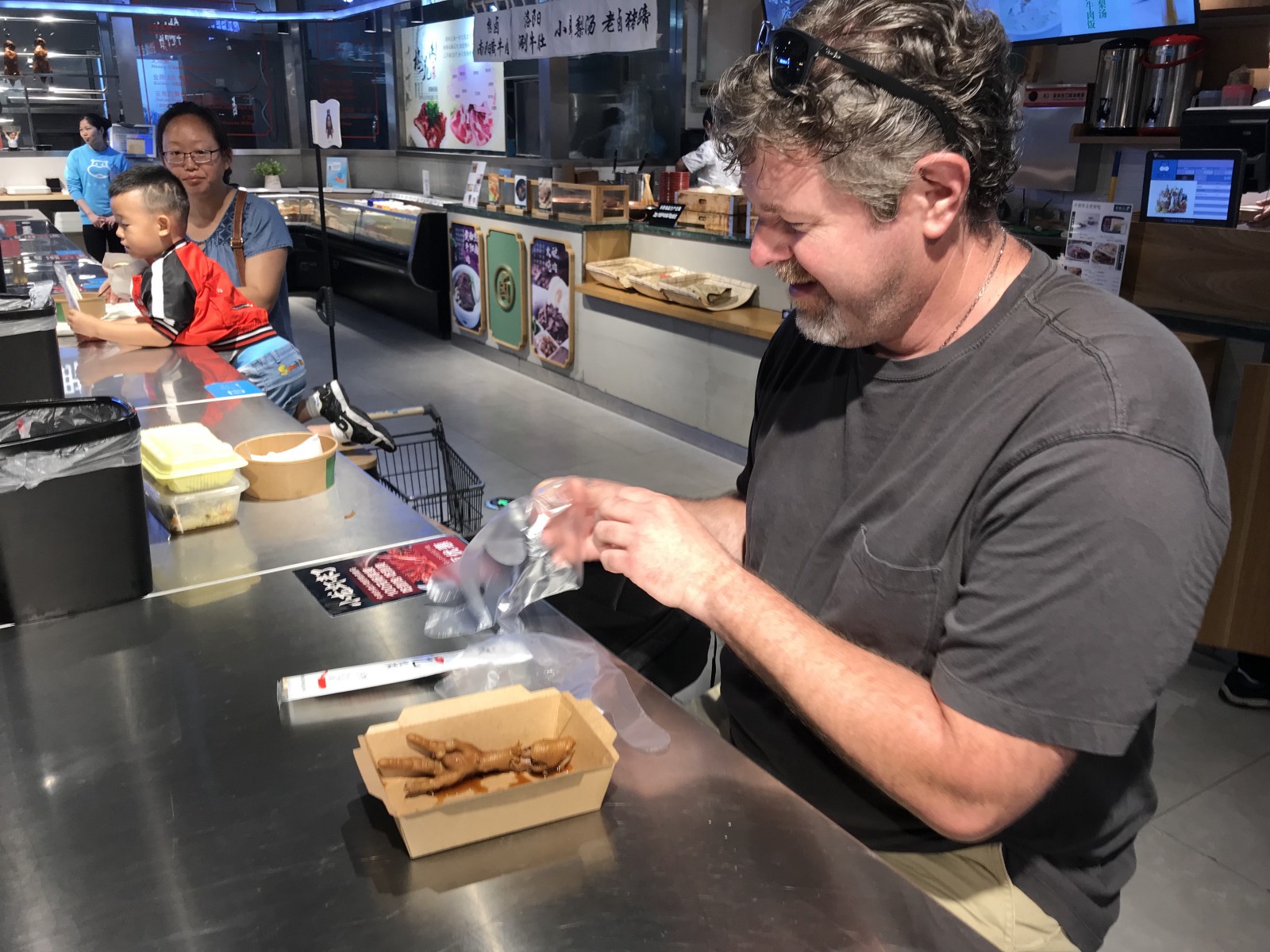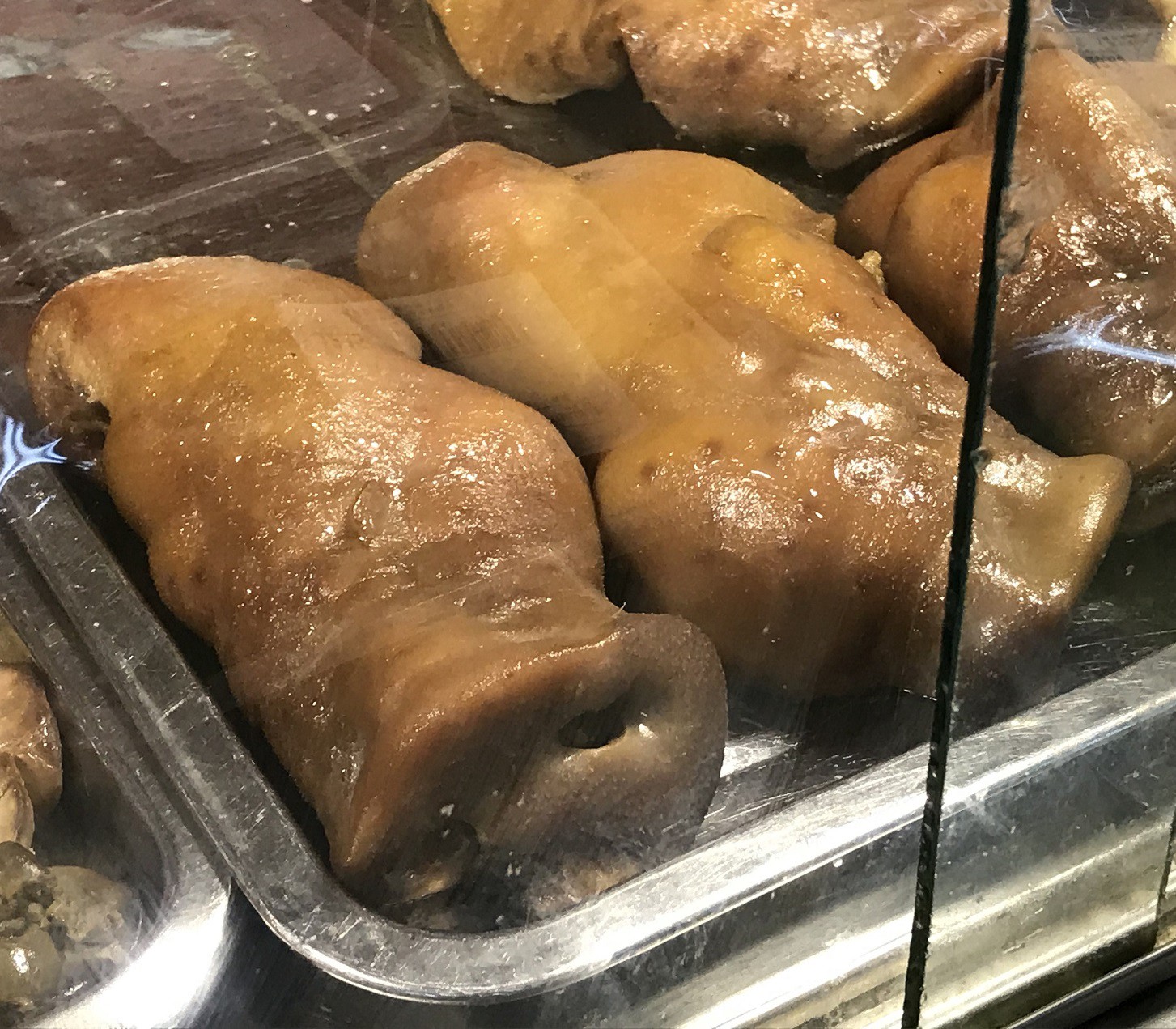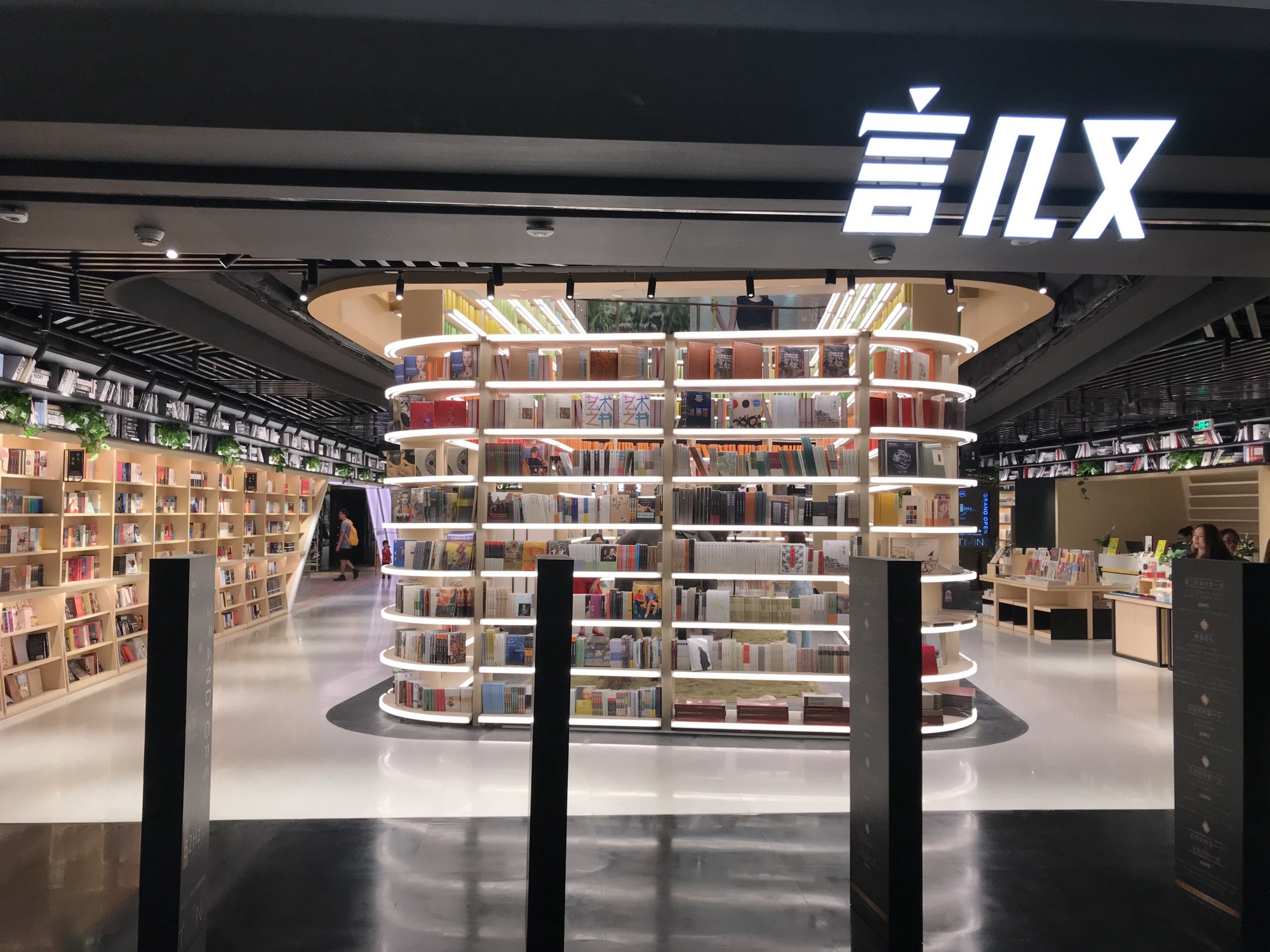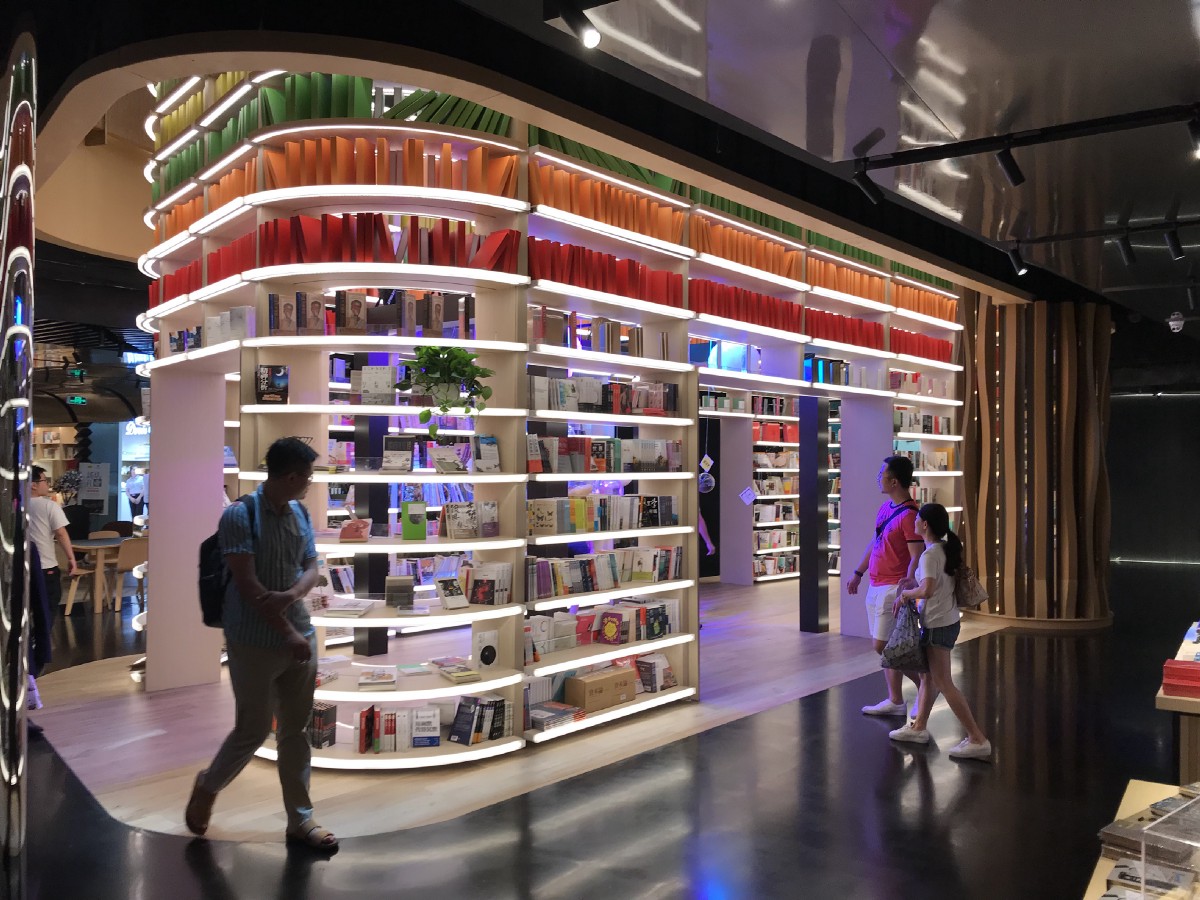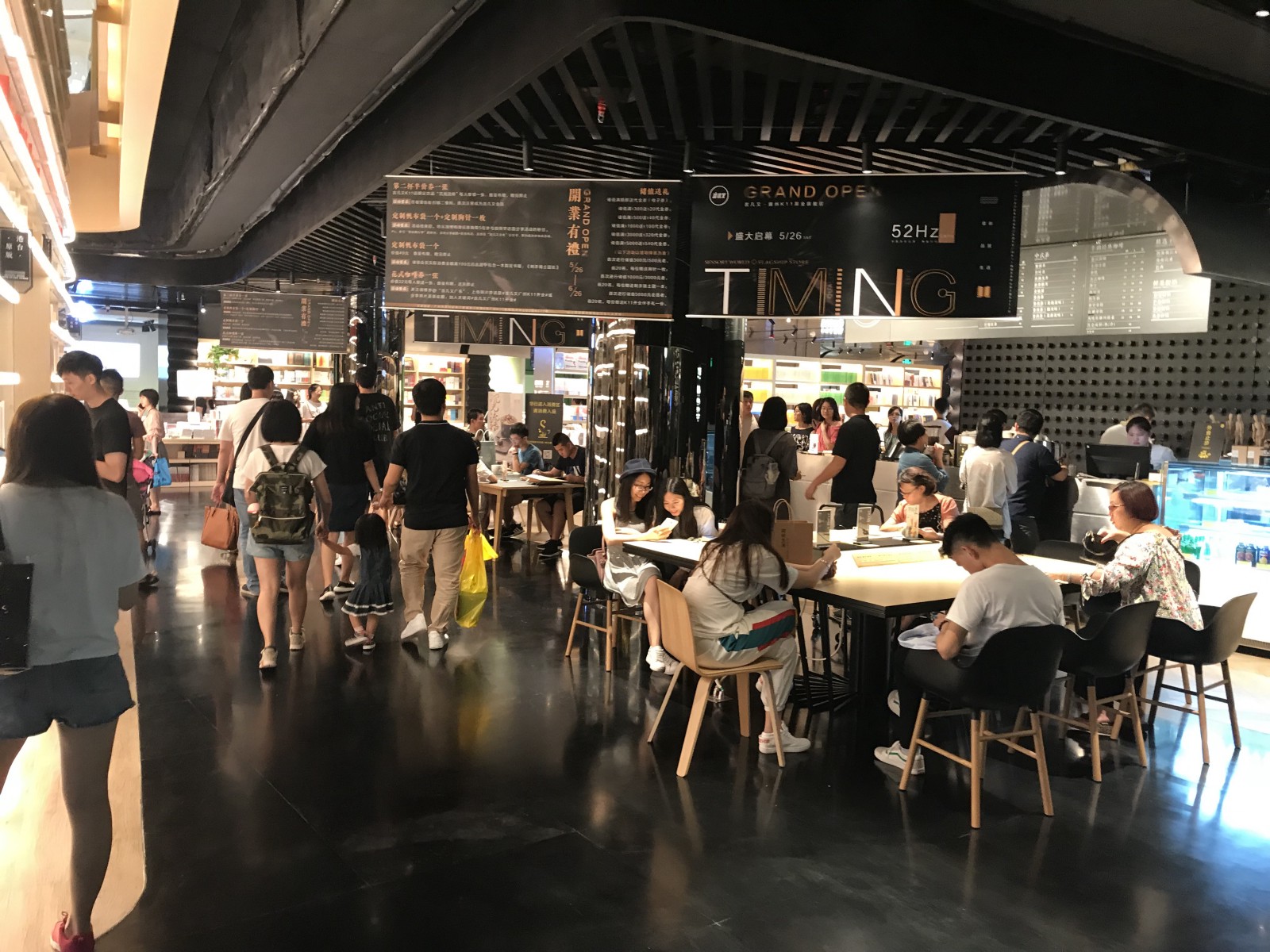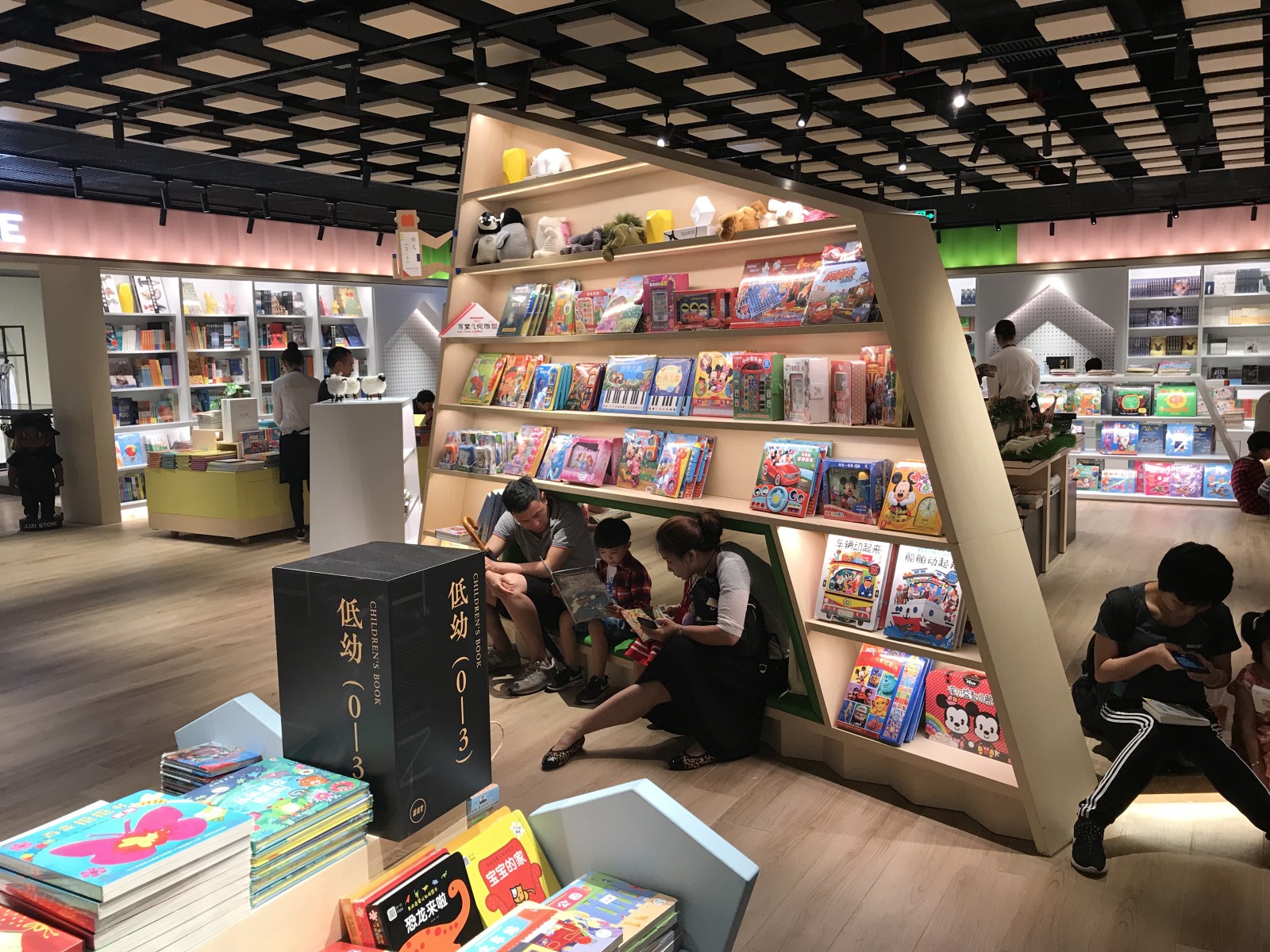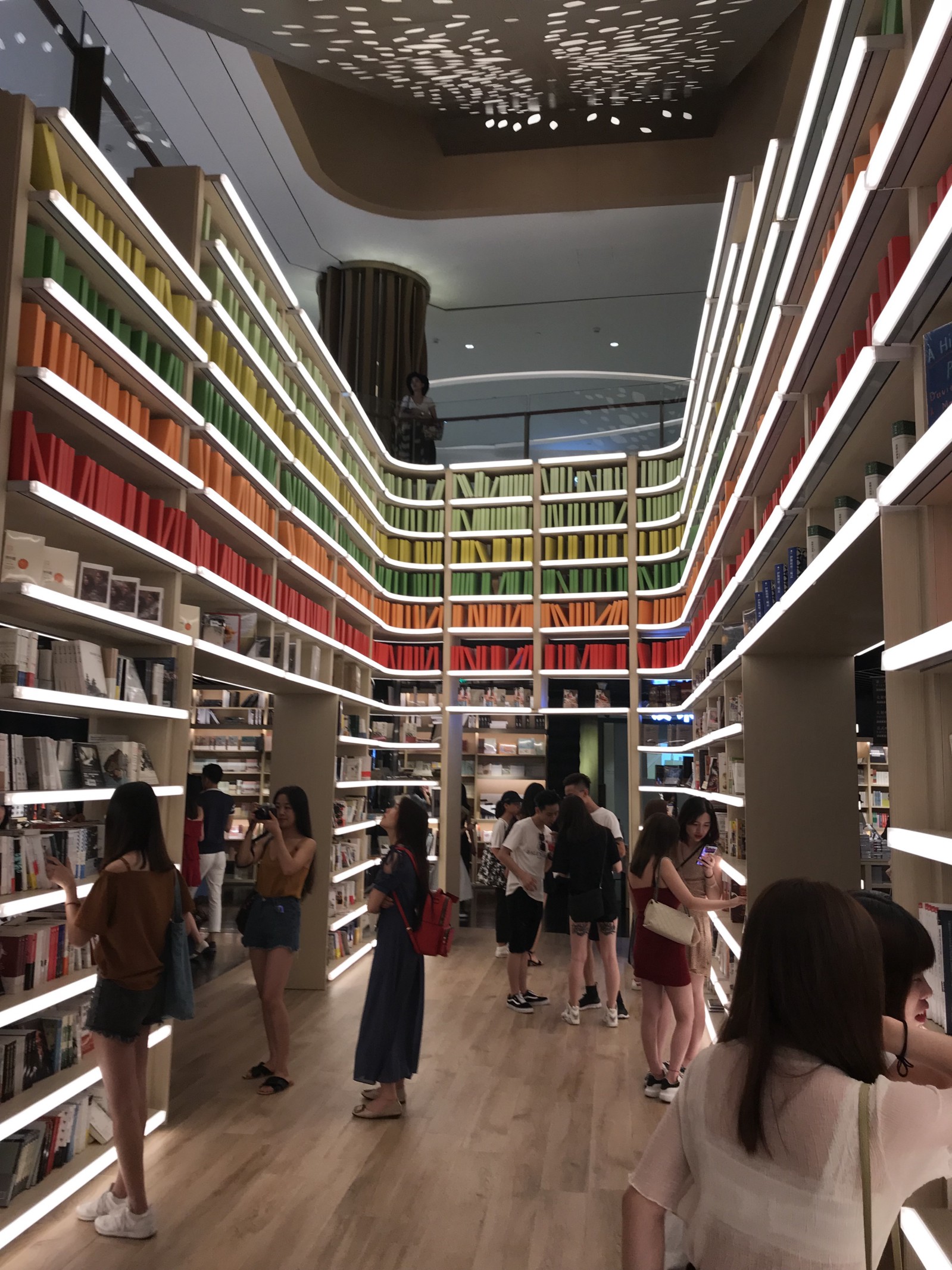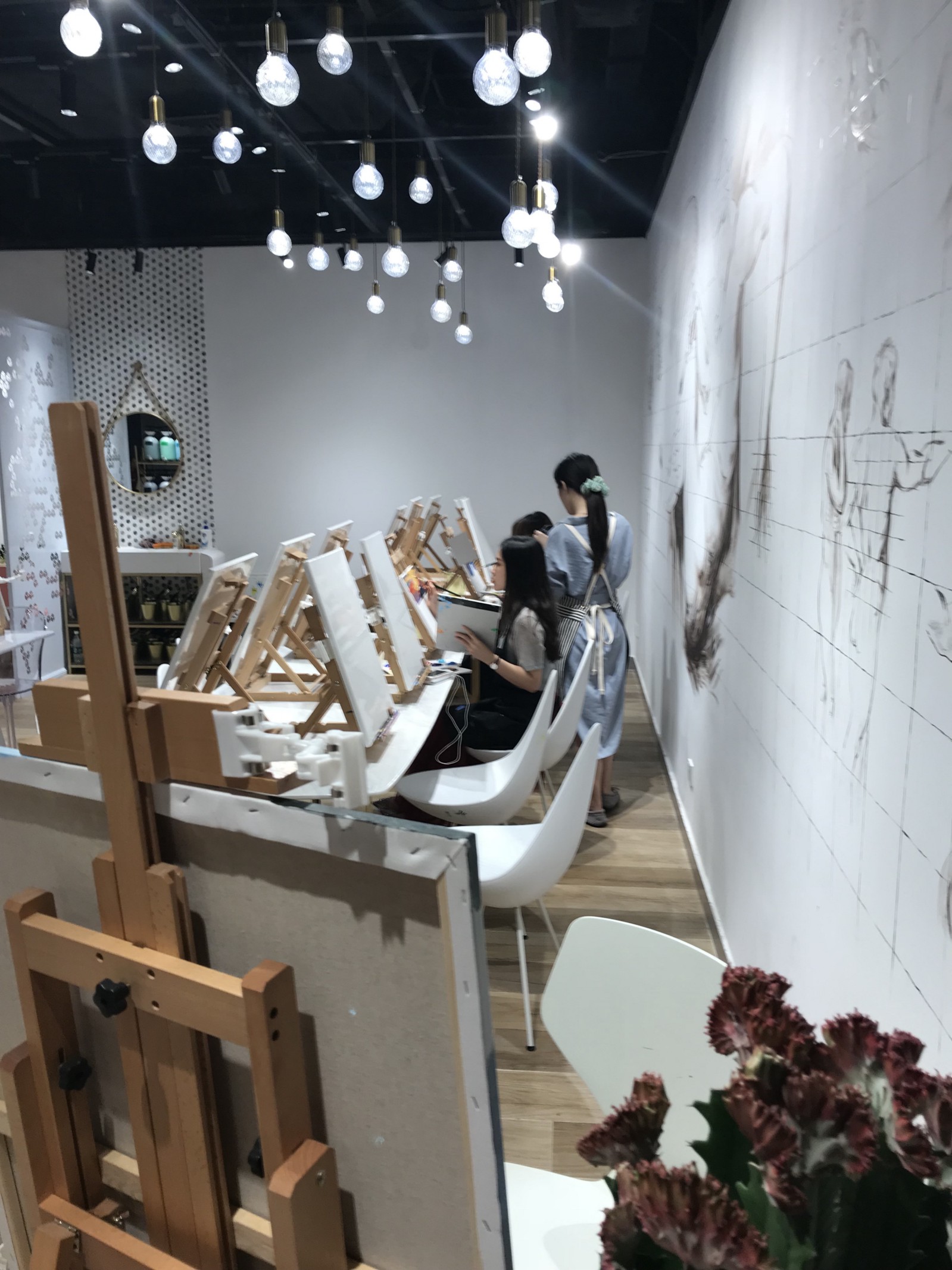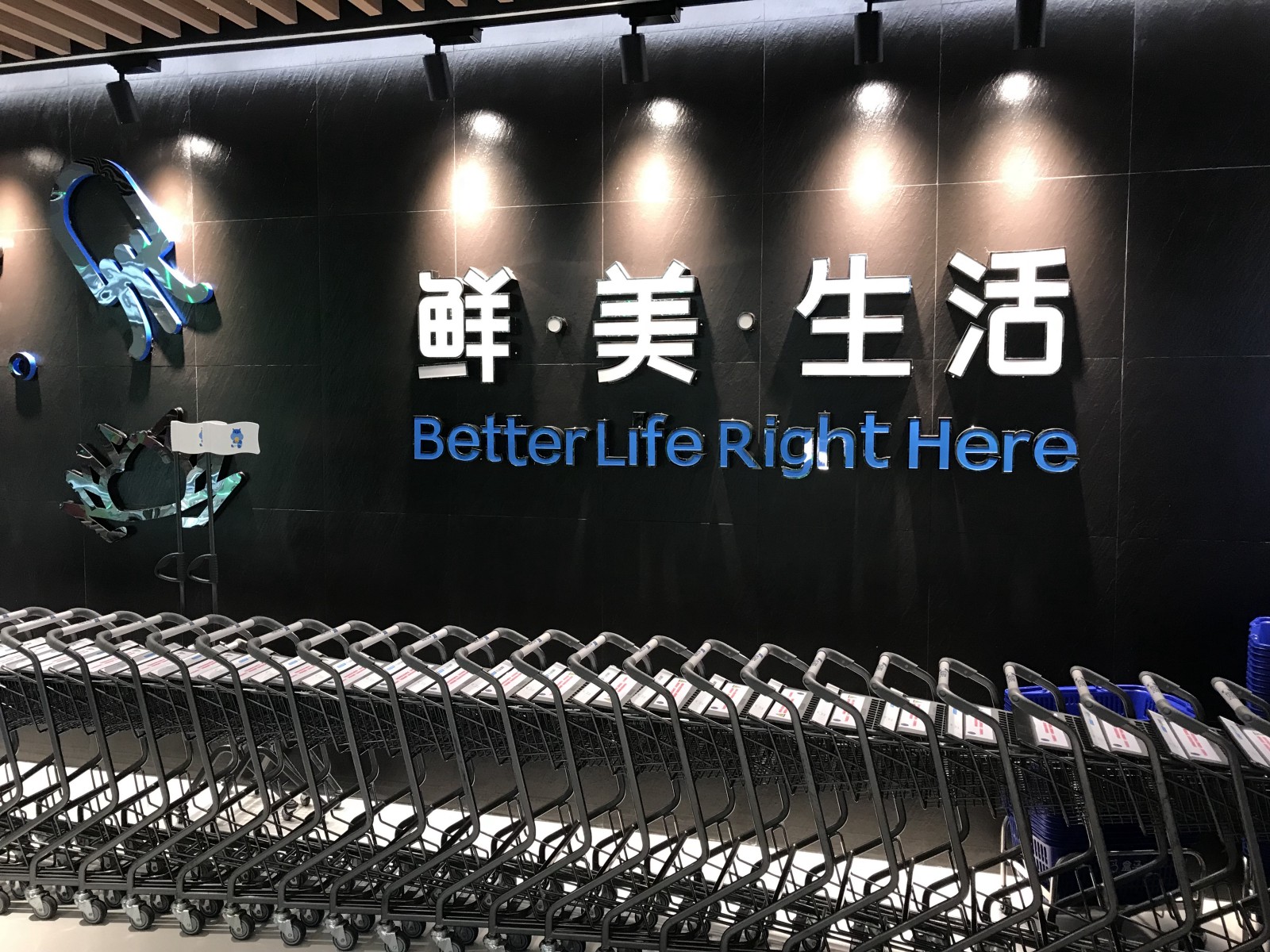
Our team went to China for consumer, brand and retail immersion. We’re not new to the international retail scene but there is so much press about China, we were more excited than usual. We visited HEMA in two different cities.
HEMA is a Chinese retailer, owned by Alibaba. It’s part of Jack Ma’s “new retail” strategy. “New retail” blends online and offline. But what struck me as interesting is that the store is strikingly analog. No digital screens in stores, no one really on their phones (surprising in China), people just shopping regular products. I’ve been reflecting on our visit to HEMA for a few days now.

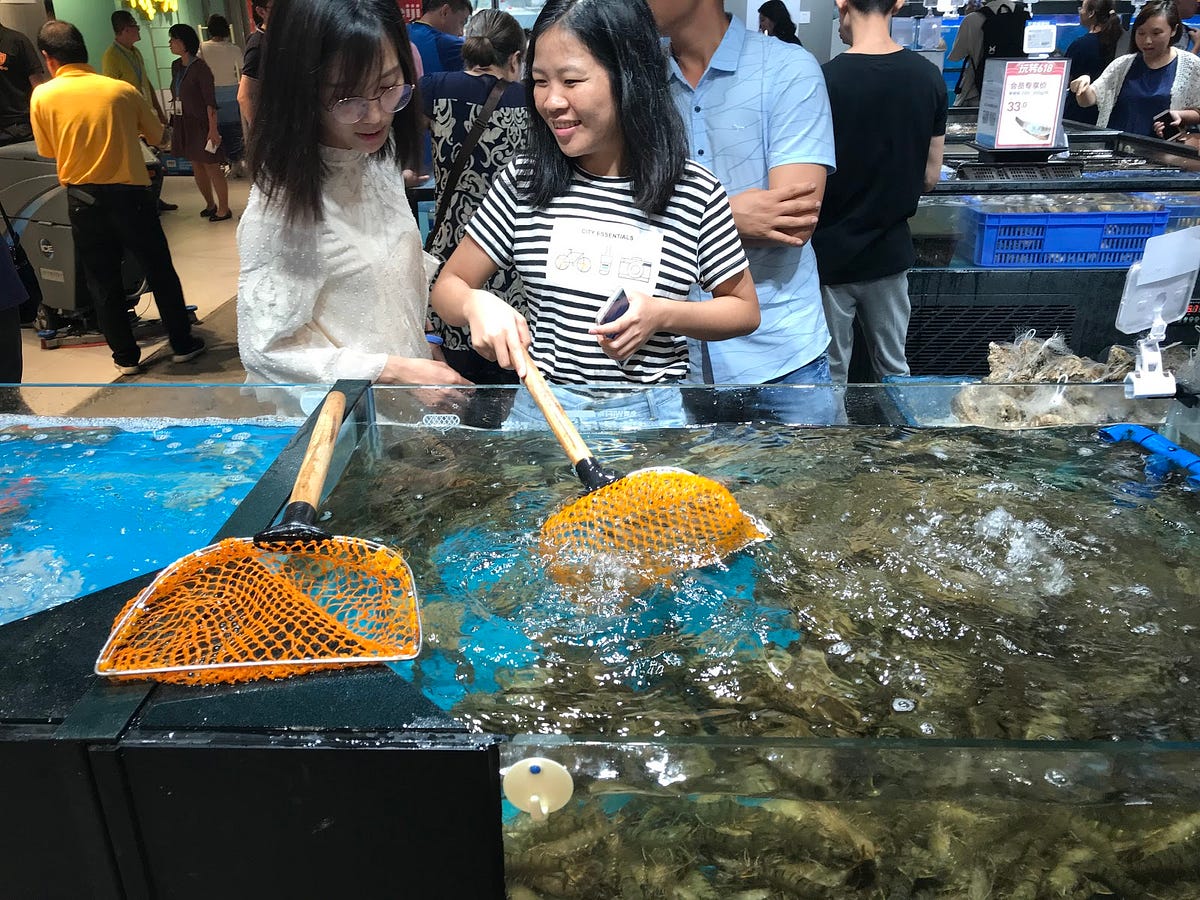
What was interesting is the selection of live seafood and the multiple little restaurant stations.
I met up with a local friend who said he will either order food online and get it delivered or go into the store, pick out his food, select ingredients and have HEMA make it and deliver it to his house. I went to the one in Guangzhou on a Saturday and the one in Shanghai on a Friday.
In Guangzhou, the eating area was full, families eating, selecting live seafood and lots of hustle and bustle.
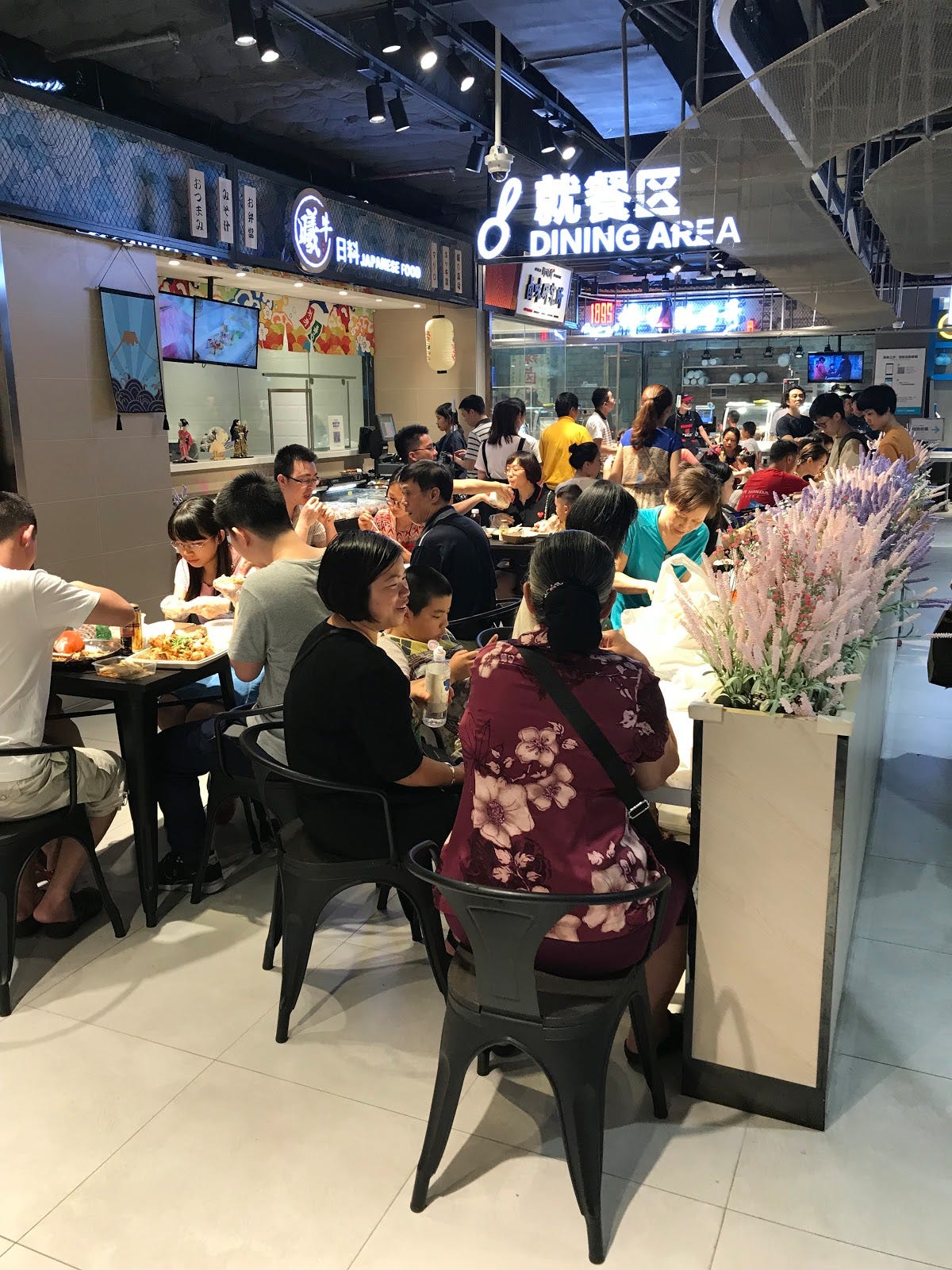
When people check out, they still wait in queue, scan their QR payment code and bag their food.
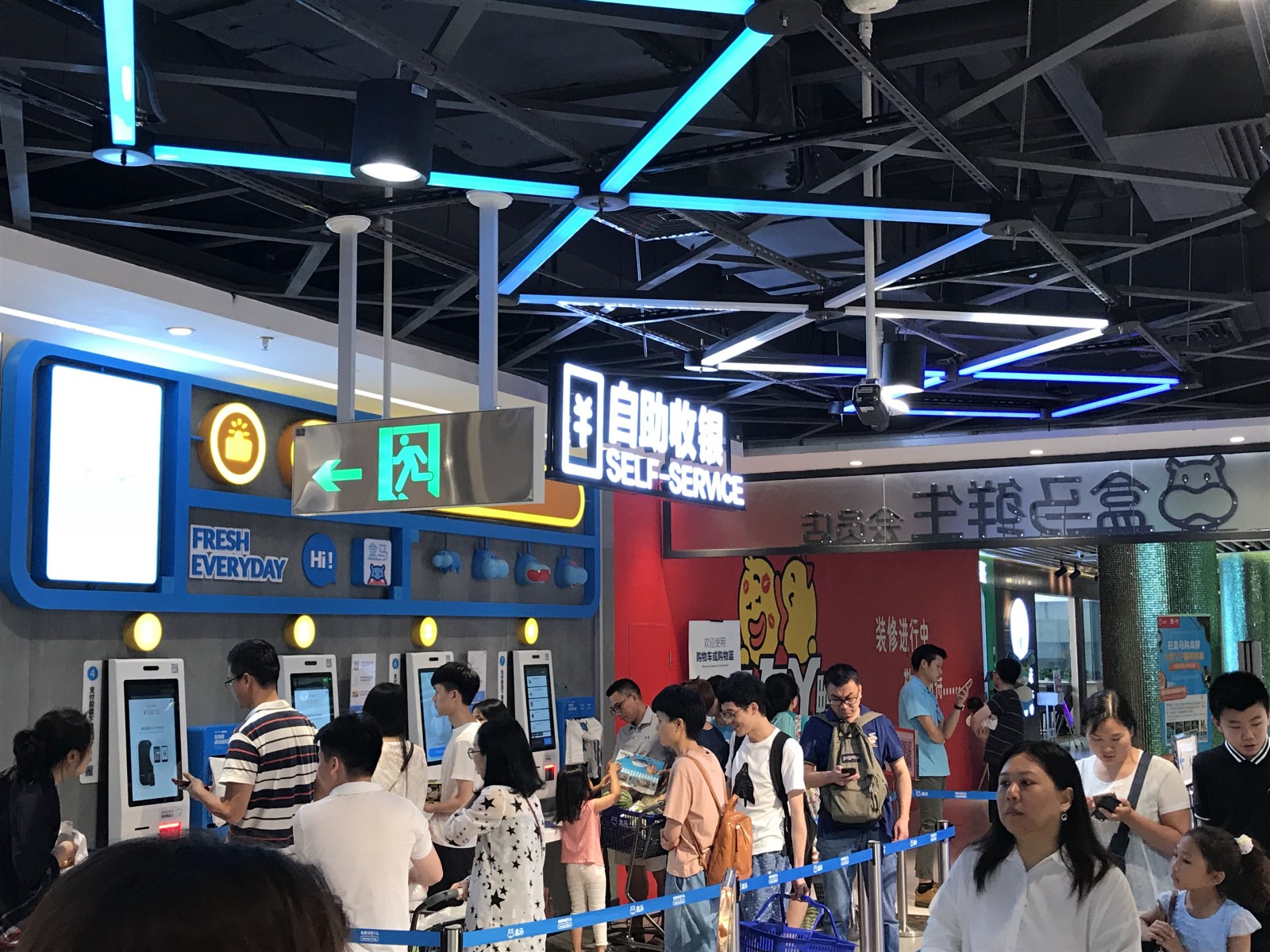
If you want to pay cash, there is a cash station. Although we used WeChat and Didi, we couldn’t sync up our Alipay or WeChat payments since none of us has a Chinese bank account. Needless to say, we waited in the cash payment line. We were later told only old people pay cash.
So what’s my takeaway? From a tech standpoint, the biggest one is that Jack Ma’s team is just trying to remove friction for the customer. He is making the experience simpler. It seems like most US retailers are on the path to adding more, not less.
It is nicely designed store with ample assortment. There are a variety of dine-in options (mini-restaurants) driving traffic and energy levels. The stores are bustling with people eating and shopping. The stores are smaller and more intimate, feeling easier to navigate and shop. The two we visited were in malls likely helping that traffic flow.
As much as we tried to live and behave as insiders, we were really outsiders, not plugged into the Chinese fabric. But even still, it didn’t seem like Ma was doing anything crazy and out of the ordinary. He is putting the customer first and focused on where he can eliminate pain in the shopping process or journey.
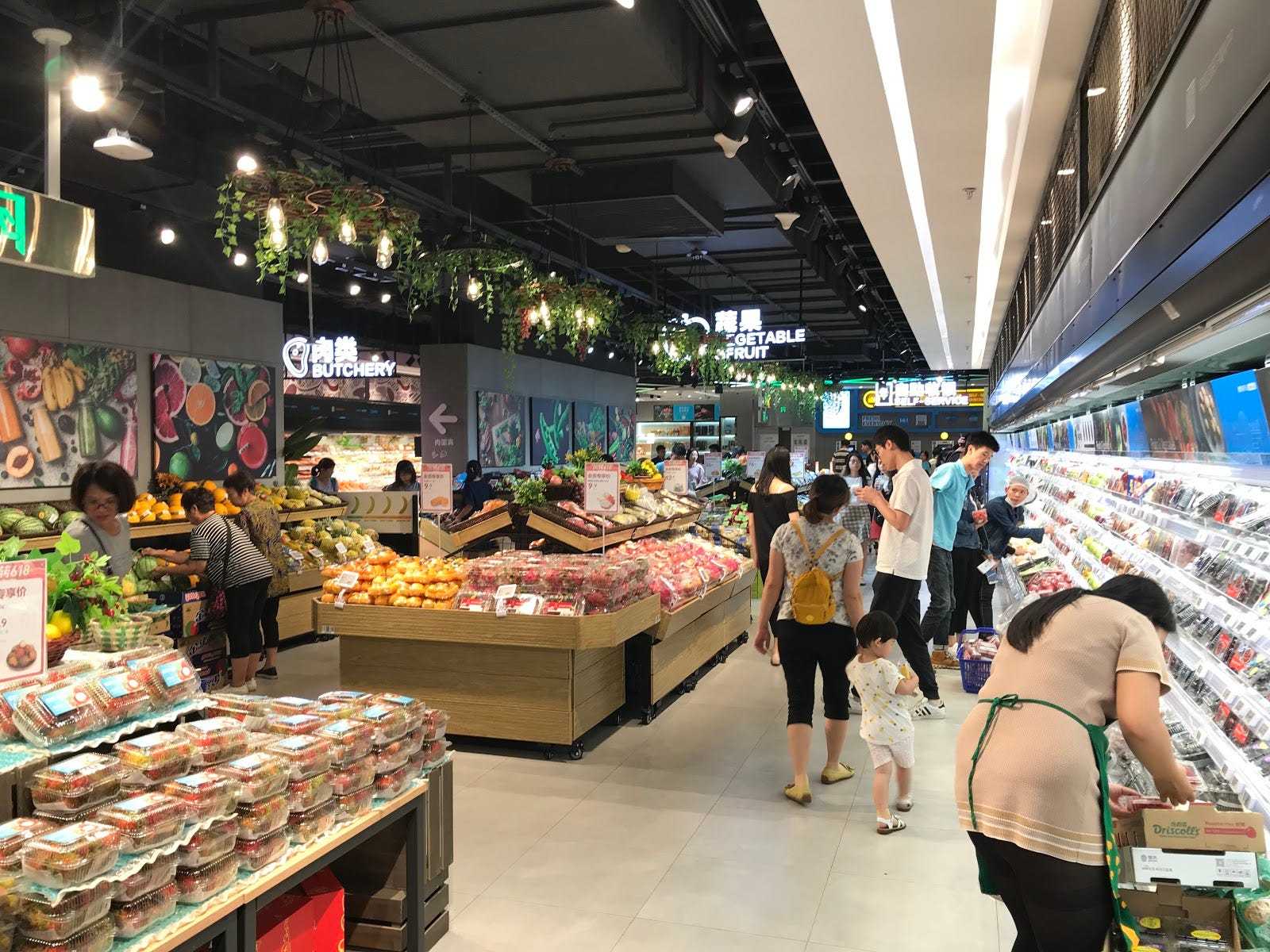
Amazon says they do that but if you’ve shopped their Amazon Books, that’s arguably not the case. They make people do more things with their phones that are additional steps that don’t add value.
So I would say U.S. retail has work to do in order to build around the customer (except Starbucks and maybe Apple). Btw, I’m not blind to the fact that Ma created a nice concept with a beautiful, simple design at a time when some of the other players’ efforts are dated.
In this case, my advice would be to not overcomplicate your efforts to drive your retail business. It’s not always about what you add. Sometimes there’s more power in deciding what to remove.
If you want to chat more about this, just shoot me an email, I’m open to debate: [email protected].
